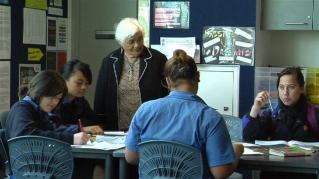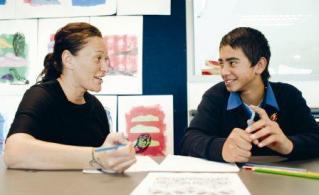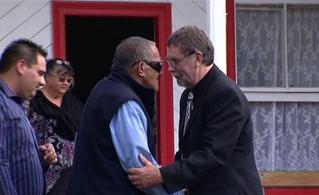Transcript
Clayton Smith – Henderson Intermediate
A major push for Te Kauhua was whānau engagement. Most of us would leave whānau engagement last, and we would work on attendance, and the easiest stuff we thought we get done quicker. I think Marion had the idea of calling all the parents in that we already had a good relationship with, kaumatua of our school, Board of Trustee reps. So all Māori parents, all already engaged with the school.
Narration
The small whānau group would greatly influence events over the next few months.
Clayton Smith
We had attendance data, reading data, writing data, truancy data, suspension and stand down data. We had everything.
Trisha Watene – Henderson whānau
They were really open about the statistics of where Māori education was in the school. It was quite sad, but they were being open and honest. And they were actually asking us: “How did we feel?”, “What did we think?”. And they wanted our input – and I thought that was really important.
Marlene Wipani – Henderson Intermediate
I listened to Clayton bring up statistics, I listened to Marion, and then I listened to our kaumatua and our kuia who basically led. And what they were saying was: “We need to do something”. So I was sitting there thinking, “In my heart you know this isn't right – we need to do something”. And I guess it was my wairua that spoke. But I stood up.
Narration
The whānau took responsibility for the calling and running of subsequent hui.
Pio Jacobs – Te Aupouri Te Rarawa
So that was the beginning of my coming in to help, and to open up meetings with a karakea. A short prayer, and a mihi to the visitors that are there.
Clayton Smith
He'd always open for us, he'd always close for us. If we had difficulties during the meeting with people going off track, it wasn't the school putting them back on track, it was the kaumatua.
Kiri Jacobs – Te Aupouri me Te Rarawa
They have come together for the purpose of helping the children to grow, the parents to grow with the children, and the teachers to grow with them. And from that point, I felt a sense of hope. But at the same time, it was having to work at it and work at it, until it really flourished
Marlene Wipani
The way I saw it was, coming together, a collaborate effort between the schools, the whānau, everybody. This wasn't going to work – the teachers, the children – it wasn't going to work unless we all come together and we get real about it.
Marion Shand – Te Kauhua Facilitator
Minutes went out to every whānau member, and saying, “In your absence these decisions were made”. If you have anything else to say, you can email the school or phone us at the school. So there was always an opportunity to give their view and their opinion, even after the hui. And that caused a higher attendance the following hui. Ultimately, we do know that engaging with the whānau is important. That has had an impact on the rest of the school. We hardly do anything without asking: “What does the whānau have to say about this?”, first. And for me, that is one of the biggest changes.





